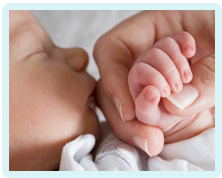
3rd Degree Tears – Does Age Increase The Risk?
Does age increase the risk of perineal tearing during vaginal birth? We explore this question in greater detail.
Does age increase the risk of perineal tearing?
Scientific evidence suggests that the older a woman is when she gives birth, the greater the risk of perineal tearing.
A perineal tear is when the perineum (the skin between the vaginal opening and rectum) rips during the delivery of a baby. It happens because the tissue is not quite elastic enough to accommodate the passing of the baby's head and shoulders, causing it to tear. This can be a minor injury, or it can be severe and extend all the way into the anal sphincter. When the anal sphincter is involved, it amounts to either a 3rd or 4th degree tear.
When we age, our tissues become less stretchy and elastic. This increases the risk of a perineal tear during birth. This was the focus of a recent study by Hans Peter Dietz of the Sydney Medical School, who studied the link between age and injury to the pelvic floor.
He found that a 20 year old having a vaginal delivery without the use of instruments faced a 10% risk of a pelvic floor muscle detaching from the pubic bone. This risk increased to 20% for a 40 year old patient having a vaginal delivery.
Dietz also found that with regards to first childbirth, the risk of pelvic floor injury increases by 6% for every extra year of age. The risk of tearing also rises because our ligaments and muscles are less stretchy. He cites that a woman who has her first baby at the age of 38 has a 15% chance of suffering a 3rd or 4th degree tear.
Rising age of women giving birth
The average age of women giving birth is rising, and it therefore follows that the number of 3rd and 4th degree tears being reported is increasing. This may also be in part due to the fact that medical practitioners have become better at identifying such injuries.
In 1973, the average age of women giving birth in England and Wales was 26 years. By 2014, the average age had risen to 30 years.
Consequences of perineal tearing
Pelvic floor injuries can lead to a uterine prolapse, while severe perineal tears can result in faecal incontinence. However, most 3rd or 4th degree tears will result in a good outcome, as long as the injury is diagnosed and repaired shortly afterwards. Problems are usually associated with a delay in diagnosis and treatment, which can amount to medical negligence. Contact us for more information.
Free Enquiry
Please call us on 0800 234 3300 (or from a mobile 01275 334030) or complete our Online Enquiry Form.



